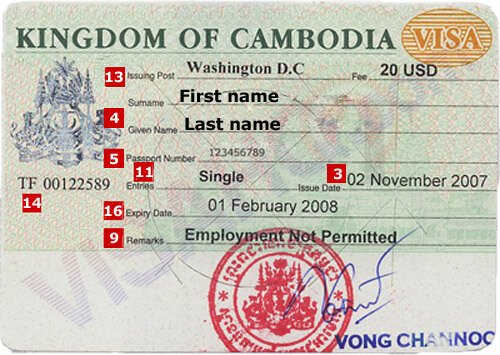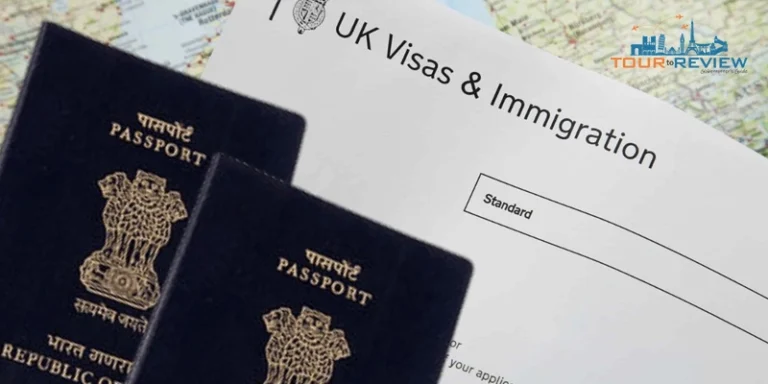USA Transit Visa Eligibility Questions
If you’re transiting through the USA, make sure to provide personal information, share your travel plans, specify your transit purpose, pay the fee, and prepare for possible additional documentation. These criteria are crucial for USA VISA ELIGIBLITY QUESTIONS.
Key Takeaways
- Personal information needed for application.
- Travel itinerary details must be provided.
- Specify the purpose of transit.
- Pay the required application fee.
- Additional documentation may be requested.
Eligibility Criteria for USA Transit Visa
To qualify for a USA Transit Visa, you must meet specific eligibility requirements set by the United States government. The transit visa duration typically allows for a short stay in the U.S., usually ranging from a few hours to a maximum of 72 hours. This visa is designed for individuals who are traveling through the United States to reach another destination and don’t plan to stay in the country for an extended period.
There are certain transit visa restrictions that applicants need to be aware of. You aren’t allowed to leave the designated airport area during your layover unless you have obtained permission to do so. Additionally, you aren’t permitted to work or study during your time in the U.S. under a transit visa.
It’s essential to adhere to the conditions outlined for the transit visa to avoid any legal issues during your brief stay.
Duration of Stay Allowed
When applying for a USA Transit Visa, it’s crucial to be aware of the Stay Duration Limits, the Permitted Transit Period, and the Length of Stay allowed. Understanding these factors will help you plan your travel itinerary accordingly and ensure compliance with visa regulations.
Make sure to check the specific guidelines related to how long you can stay in the United States on a transit visa.
Stay Duration Limits
How long are you permitted to stay in the United States with a transit visa? When holding a transit visa, you are allowed to stay for a maximum of 29 days. It is important to adhere to this limit to avoid any legal issues. Overstaying your permitted duration can lead to severe consequences, such as being banned from entering the U.S. in the future. Transit visa extensions are generally not granted, so it is vital to plan your stay within the approved timeframe.
To help you understand the stay duration limits better, here is a breakdown of the permitted stay for different types of transit visas:
| Visa Type | Maximum Stay Duration |
|---|---|
| C-1 Transit | 29 days |
| C-1/D Crew | 29 days |
| TWOV | 29 days |
| VWP Transit | 29 days |
Permitted Transit Period
The allowed transit period for individuals holding a transit visa is important to follow to avoid legal complications. When granted a transit visa, you must adhere strictly to the specified transit visa duration.
Failure to abide by the transit visa restrictions can result in serious consequences, such as being denied entry, facing legal actions, or being banned from future visits to the US.
Transit visa duration typically ranges from a few hours to a few days, depending on your specific visa type and itinerary. It’s essential to check your visa documentation carefully to understand the permitted transit period granted to you.
Make sure you exit the US within the allowed timeframe to stay compliant with your visa conditions.
Moreover, transit visa restrictions dictate that you’re only allowed to transit through the US without engaging in activities that require a different visa type, such as employment or studying.
Violating these restrictions could lead to severe penalties and jeopardize your future travel plans. Always respect the transit visa limitations to have a smooth and lawful transit experience.
Length of Stay
Adhere strictly to the permitted duration of stay stipulated on your transit visa to avoid any legal complications during your time in the US. Transit visa allowances determine how long you can stay in the United States before you must depart for your final destination.
Typically, transit visas grant stays of up to 72 hours, but some visas may allow stays of up to 30 days. It’s important to check your visa documentation to confirm the specific stay duration options granted to you.
Exceeding the permitted length of stay on your transit visa can lead to serious consequences, such as being deported, banned from future entry into the US, or facing legal penalties.
If you need to extend your stay due to unforeseen circumstances, seek guidance from immigration authorities or your country’s embassy in the US promptly. Remember, compliance with the stipulated stay duration is essential to ensure a smooth transit experience and avoid any unnecessary complications during your time in the US.
Passport and Travel Documentation
Make sure your passport contains at least six months of validity beyond your intended stay when applying for a USA transit visa. Meeting passport validity requirements is essential for entry into the United States.
When applying for a transit visa, verify that your passport adheres to the entry requirements to avoid any travel restrictions. The visa application process will require you to submit a passport that meets the specified validity period. Additionally, confirm that your passport is in good condition, with no significant damages that could hinder your entry.
Understanding the entry requirements for the USA transit visa is vital to ensure a smooth travel experience. Failure to meet these requirements might result in delays or denial of entry.
Countries Eligible for Transit Visa
You should consider the eligible transit countries and the specific visa criteria requirements when planning your trip.
Understanding which countries qualify for a transit visa and the necessary criteria can help streamline your travel arrangements.
Be sure to verify the transit visa regulations for the countries you’ll be passing through to avoid any unexpected issues.
Eligible Transit Countries
Navigating the complexities of transit visa requirements is vital to identify the eligible countries for transit purposes. When considering transit visa restrictions, it’s important to keep in mind that not all countries are eligible for transit visas.
The eligibility of a country for transit purposes can have a substantial impact on your travel plans. Some countries may have specific transit visa processing times, so it’s advisable to check this information beforehand to guarantee a smooth travel experience.
Understanding which countries are eligible for transit visas can save you time and effort in the visa application process. It’s essential to research and verify the specific requirements for transit visas for each country you plan to transit through.
Visa Criteria Requirements
Understanding the specific visa criteria requirements for countries eligible for transit visas is essential for smooth travel planning. When applying for a transit visa to the USA, it’s important to be aware of transit visa restrictions and interview requirements that may vary based on your nationality. Below is a breakdown of some key criteria for transit visas:
| Criteria | Description | Restrictions |
|---|---|---|
| Valid Passport | Passport must be valid for at least 6 months beyond the intended stay | Some countries may require a longer validity period for transit visas |
| Proof of Travel | Documentation showing confirmed onward travel within a specific timeframe | Certain visas may have restrictions on the maximum duration of stay |
| Financial Sufficiency | Evidence of financial means to cover expenses during transit | Requirements may vary depending on the country of origin and the duration of transit |
| Transit Visa Interview | Some applicants may be required to attend an interview at the US embassy or consulate | Interview may include questions about travel plans, reasons for transit, and ties to home country |
Being well-prepared and meeting these criteria can increase your chances of a successful transit visa application.
Visa Waiver Program Participants
Participants in the Visa Waiver Program may be eligible for certain transit visas to the USA. Transit visa benefits for Visa Waiver Program participants include the convenience of being able to pass through the United States on the way to another destination without the need for a full visitor visa. This can save time and paperwork, making travel smoother and more efficient.
However, there are some transit visa restrictions that participants should be mindful of. These restrictions may include limits on the duration of stay allowed in the U.S. while in transit, as well as restrictions on activities that can be undertaken during the layover period. It’s important for participants to understand and adhere to these restrictions to avoid any potential issues during transit.
Transit Visa Application Process
Start by filling out the online application form for a USA transit visa. The form will require basic personal information, details of your travel itinerary, and the purpose of your transit through the United States. Once you submit the form, you’ll need to pay the application fee. The processing time for a transit visa can vary, so it’s advisable to apply well in advance of your travel date to allow for any unforeseen delays.
In some cases, you may be required to attend a transit visa interview at the U.S. embassy or consulate in your country. During the interview, be prepared to provide additional documentation supporting your transit visa application, such as proof of onward travel arrangements or financial stability.
The consular officer may ask questions about your travel plans and intentions while in the U.S. It’s essential to be honest and forthcoming during the interview process to increase your chances of a successful transit visa approval.
Frequently Asked Questions
Can I Leave the Airport During My Transit in the Usa?
During your transit in the USA, you can leave the airport to explore sightseeing opportunities and indulge in local cuisine exploration. Make the most of your layover by experiencing a taste of the city.
Are There Any Restrictions on the Items I Can Carry During Transit?
During transit, you must adhere to luggage restrictions and prohibited items. Security checks and customs regulations are in place to guarantee compliance. Be mindful of what you carry to avoid any issues.
Can I Apply for a USA Transit Visa if I Have a Layover?
If you have a layover during your travels, you can explore different layover options to make the most of your time. Some countries offer visa exemptions for short layovers, allowing you to explore briefly.
Are There Any Specific Requirements for Minors Traveling Alone?
If a minor is traveling alone, parental consent is usually required. Airlines have specific rules for unaccompanied minors. Make sure to check with the airline about their policies and procedures for minors flying solo.
Is a Transit Visa Necessary if My Layover Is Less Than 24 Hours?
If your layover is less than 24 hours, you may not need a transit visa. Some countries offer visa waivers or exemptions for short layovers and airport transfers. Check the specific requirements of your transit destination.
Conclusion
Overall, obtaining a USA transit visa necessitates meeting specific eligibility criteria, having the necessary travel documentation, and following the application process.
It’s crucial to guarantee that you fulfill all requirements and provide accurate information to increase your chances of approval.
By understanding the guidelines and preparing thoroughly, you can smoothly navigate the transit visa process and enjoy your time in the United States.







